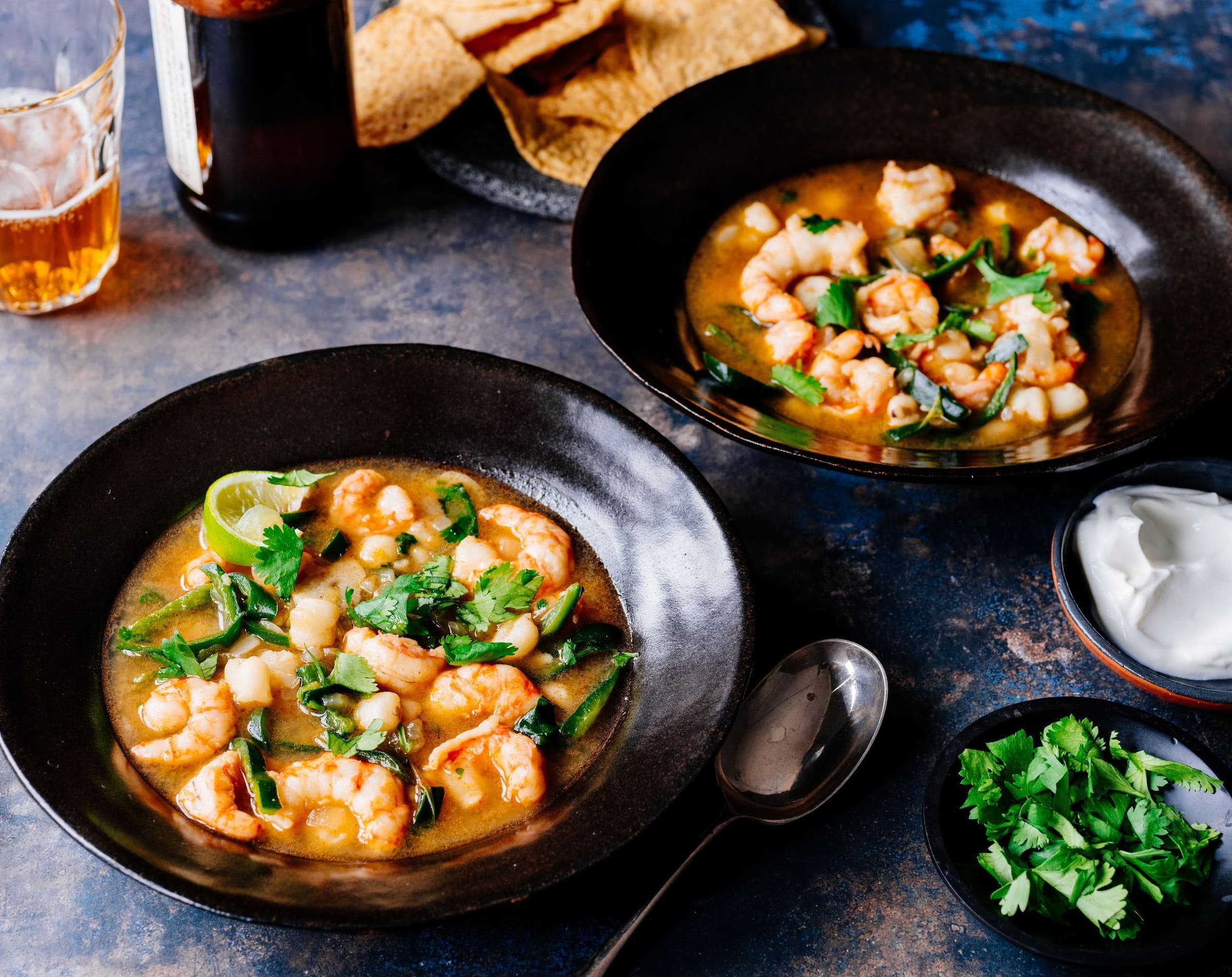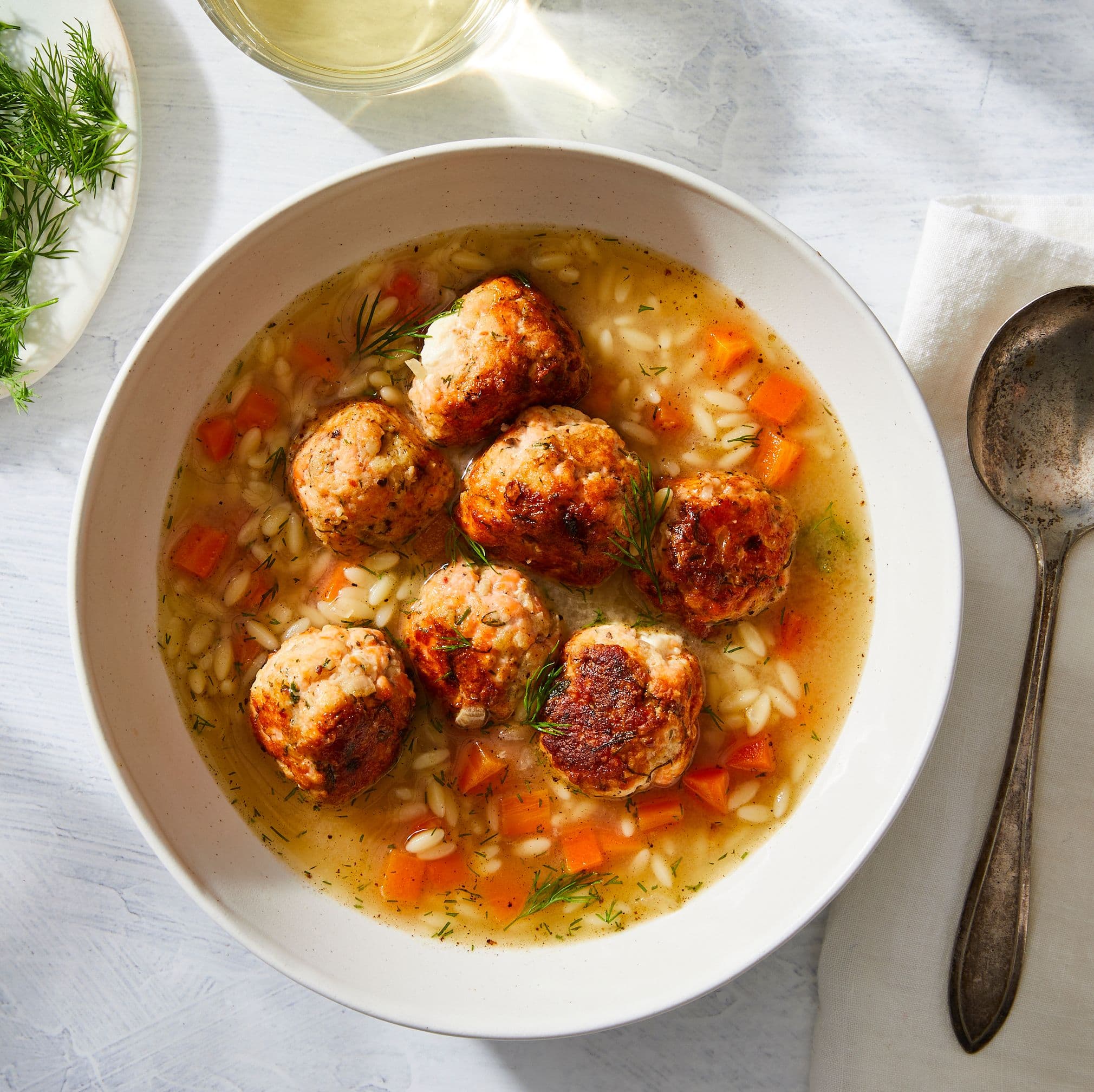January is National Soup Month and the ideal time to drill down into what makes a great bowl of soup.
Flavor
Many soups can be prepared without much thought and still yield pretty satisfying results. Hearty soups that need to simmer for hours in order to break down proteins and soften tough root vegetables or legumes — like beef barley, pork pozole, chicken noodle, and mixed bean soups — also develop lots of flavor during their long cooking times. Those ingredients can be thrown together in a large pot with water and a few aromatics all at once and be perfectly delicious after 2 hours.
But seafood soups and chowders do best when we’re more intentional about how we put them together. It doesn’t make them more complicated, it just takes a different approach. Unlike beef shanks, pork shoulder, or dried beans, most seafood cooks in under 5 minutes, so we need to develop the flavor first by making a rich, aromatic stock. And unlike beef, chicken, or vegetable stocks, seafood stock comes together very quickly, especially if you start with bottled clam juice. A complexly-flavored seafood stock is great if you have about 40 minutes. You can make the stock while preparing the ingredients for whatever chowder or soup you plan to serve.
For an even quicker and simpler stock option, simmer 2 cups bottled clam juice (two 8-ounce bottles) with 2 cups water, a smashed garlic clove, and whatever seafood scraps are at hand. I always recommend saving crab and shrimp shells in your freezer for stock, but salmon skin, bones picked clean from salmon collars or tails, shrimp roe, and even leftover cooked fish add loads of flavor. Ten to 15 minutes is long enough to infuse a deeper seafood flavor.
In Shrimp Tortilla Soup, shrimp shells and roe are simmered with clam juice and water for only 15 minutes before building the soup. New England Fish Chowder boosts flavor by sautéing aromatics in rendered smoky bacon fat. Other soups use commercially-made spice pastes or powders — Caribbean curry powder, miso, nam prik pao (for tom yum), gochujang, chipotles in adobo, or Old Bay Seasoning — to add instant complexity.
Consistency
Do you prefer light, brothy soups or thick, hearty chowders? Both are wonderful in their own ways, but the mouthfeel of a creamy, thick soup is irresistible. Viscosity can be achieved several ways, using a variety of ingredients and methods. Flour is a popular thickener. Stir in a tablespoon or two of flour while sautéing aromatics before whisking in the broth. Once the mixture comes to a simmer, the flour expands and thickens the broth. At this point, you can add cream (if desired) and the remaining ingredients. When using flour, though, be sure to sauté it for 1 or 2 minutes to cook off the raw, floury taste. And when adding the broth, add it gradually, whisking constantly to avoid lumps. For a gluten-free option, potatoes can act as thickening agents, such as in this Basque Seafood Potato Soup. The starch is released into the simmering broth as the potatoes cook, soften, and ultimately break down. One of my favorite gluten-free thickeners is shredded fresh corn tortillas. In Shrimp Tortilla Soup, they are added to the broth and allowed to soften and thicken before completing the soup. The tortillas also add lovely corn flavor as well as texture.
Add-ins and Garnishes
With so many possibilities, it’s hard to go wrong. Nevertheless, a thoughtful combination of ingredients is best. Pasta, potatoes, rice, and noodles add yummy, starchy bulk to light broths, giving them a substantial boost. This delightful Lemony Orzo Soup with Seafood-Feta Meatballs gets heft from orzo and carrots, flavor from lots of dill, and the meatballs, using salmon burger and feta, melt in your mouth. And of course, no New England Fish Chowder is complete without oyster crackers.
Some seafood soups are garnished with sauces to add richness and depth. This super-quick Bouillabaisse is served with toasted baguette slices and a dollop of garlicky, creamy rouille (spicy French mayo) and Basque Seafood Potato Soup gets a spoonful of romesco sauce.
Thai soups like Panang Curry are often served with rice and accompanied by bowls of fresh herbs, chiles, and lime wedges that add fragrance and acid.
Here is a simple guide to building your own bowl without a recipe:
- Start by making a flavorful stock
- Sauté the aromatics
- Choose your consistency (thick or thin)
- Add the stock
- Simmer longer-cooking vegetables (i.e. potatoes and carrots)
- Add the seafood
- Serve and garnish
- Be sure to season lightly at every step!



